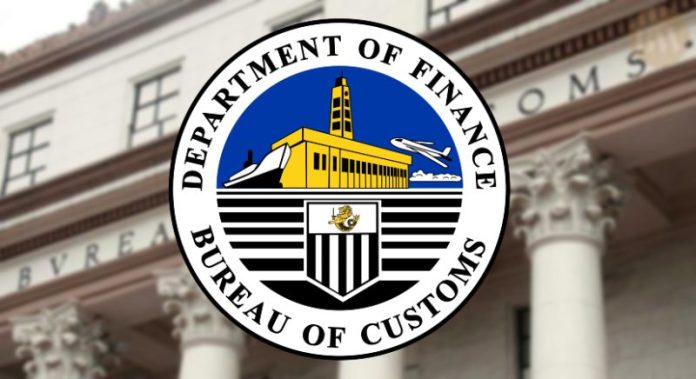-
The Bureau of Customs “inappropriately” tagged more than 48,000 consumption entry shipments in 2022
-
This opens up the possibility that the misdeclaration/undervaluation of imports was not detected, diminishing government revenue generation
-
The shipments involved 48,093 consumption entries with total assessed duties and taxes of P42.07 billion in 2022
-
2,416 consumption entries with assessed duties and taxes of P3.59 billion were wrongly tagged as “green,” “yellow,” or “orange” instead of “red” under BOC’s selectivity system and released without 100% physical examination, the audit report
-
45,677 consumption entries with assessed duties and taxes of P38.51 billion were also inappropriately tagged
-
The COA report noted the lack of manpower at the Risk Management Office, which has only 22 staff as opposed to the 50 employees suggested by RMO in a study
The Bureau of Customs (BOC) “inappropriately” tagged more than 48,000 consumption entry shipments in 2022, opening up the possibility of misdeclaration/undervaluation of imports and diminishing government revenue generation.
In the recently released 2022 audit report on the BOC, the Commission on Audit (COA) revealed there were 48,093 consumption entries with total assessed duties and taxes of P42.07 billion that were inappropriately tagged.
These entries form part of the total 950,327 consumption entries lodged and registered in the bureau’s Electronic-to-Mobile (e2m) System from January to December last year, COA said, noting that the data was culled from a review of the e2m System database, a walkthrough as well as an interview on operations of BOC’s Risk Management Office (RMO).
Of the 48,093 consumption entries in question, 2,416 with assessed duties and taxes of P3.56 billion were inappropriately tagged as “green,” “yellow,” or “orange” instead of “red” under BOC’s selectivity system and released without undergoing 100% physical examination.
The report said this was inconsistent with the prescribed and fixed criteria on risk management under BOC’s selectivity system: “The release of shipments which should have been tagged as ‘Red’ without 100% physical examination poses the risk that misdeclaration/undervaluation of goods and importations of prohibited goods may not be detected, thereby affecting the revenue generation and border protection functions of the bureau to the disadvantage of the government.”
Another 45,677 consumption entries (forming part of the 48,093 entries) with assessed duties and taxes of P38.51 billion were likewise inappropriately tagged. Of the 45,677 consumption entries, 26,029 should have been tagged as green but were tagged as yellow, orange, or red instead; 18,195 consumption entries should have been tagged as either green or yellow but were instead tagged as orange or red; and 1,453 consumption entries should have been tagged yellow instead of orange or red.
The COA report said analysis of importations of 107 accredited non-regular importers showed eight were tagged as orange and 75 tagged as red, instead of yellow, and were inconsistent with the fixed prescribed criteria under the selectivity system.
BOC acceded to COA’s recommendation to require the RMO chief to review inappropriately tagged consumption entries and explain non-compliance with the fixed criteria under the selectivity system. COA also asked BOC to provide a complete list of risk parameters used as basis for the selectivity system.
The audit report noted that the selectivity/lane color tagging per criterion was not included in the inventory of active specific criteria as of April 3, 2023 that BOC had submitted to COA.
This means the fixed criteria “is insufficient to analyze and validate the inconsistencies noted by the AT [audit team] in the selectivity system based on the audit procedures performed,” COA said. It added that the non-submission precluded the AT from further analyzing and validating the inappropriate tagging in the selectivity system.
Selectivity system
BOC’s selectivity system refers to the use of risk-based color channeling to manage risks and allow the agency to “allocate its scarce resources to the high-risk areas while increasing the efficiency of the clearance process for low-risk shipments.” It functions according to the criteria, parameters, and other data elements encoded and conditions set by the RMO.
Shipments tagged for the “green lane” are those that are deemed no-risk or low-risk and don’t require documentary review or inspection.
The “yellow lane” is for cargoes that are low-risk to medium-risk and are subject to document check. The “orange lane” is assigned to medium-risk to high-risk cargoes that will have to go through x-ray scanning and be subjected to physical examination if a suspicious image is found.
The “red lane” is for high-risk cargoes, which are subject to both x-ray scanning and physical examination.
Lack of manpower
The COA report noted the lack of manpower at the RMO. As of last year, RMO only had 10 plantilla positions and 12 contract of service for a total of 22 employees. A study conducted by RMO suggests the need for 50 employees.
The report noted that BOC’s scarce resources such as lack of manpower “may affect the efficiency of the risk management processes and may hinder the BOC in fulfilling its mandate on revenue generation, border protection, and trade facilitation.”
BOC’s Human Resource Management Division said additional plantilla positions have been created and their documentary requirements are being processed for submission to the Department of Budget and Management (DBM).
COA recommended expediting the submission of the proposed plantilla positions to DBM to strengthen staff capacity. – Roumina Pablo





